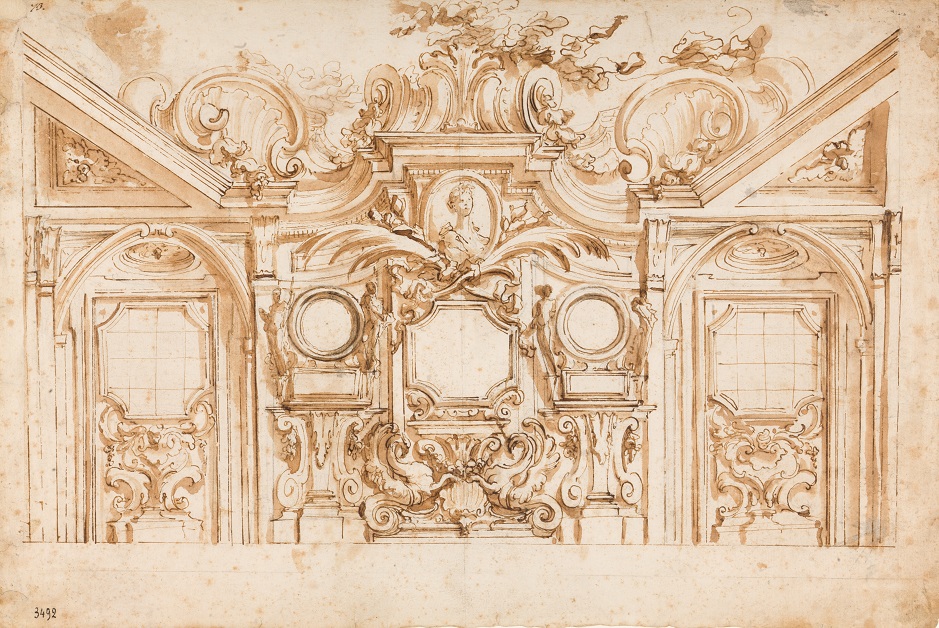
Click here to view image
Project for the decoration of a mezzanine wall
Giovanni Battista Villa
De Ferrari, Gregorio
drawing
D 3492
Unità di misura: mm; Altezza: 292; Larghezza: 437
penna e inchiostro
Among Gregorio De Ferrari's most scenographic and personal sheets are certainly his refined projects for interior decoration, of which the drawing under examination is an exemplary model: these are preparatory studies for the layout and furnishing of walls and, sometimes, portions of vaults in noble rooms, for which the artist studies on paper architectural scores, stucco ornaments, the shape and arrangement of squares for mirrors and paintings. In a fully Baroque perspective, Gregorio imagines every detail of these spectacular 'wings', including furnishing and decorative elements to be then translated into different materials and by other hands: not only painting, therefore, but also stucco, carved and gilded wood, glass. The decorative repertoire is that of the late 17th century, but with a sensitivity and grace that already anticipates the following century, with an abundance of volutes, curls, cartouches and phytomorphic whorls, arranged on the paper in symmetrical solutions, as in this case, or in alternative proposals to be submitted to the client, as in the case of the beautiful sheet, still in the Genoese civic collections, with a Project for the decoration of the hall and vault with a mythological scene (Fall of Icarus?) (inv. D2159), very finished and perhaps intended as a model to be kept in the workshop for possible new requests. Of the drawing in question, we know in detail the occasion of commissioning, destination and final realisation, albeit in forms that are not entirely consistent with those of the model on paper. In fact, in the sheet we recognise a rather advanced design idea for one of the rooms in the flat of Anton Giulio II Brignole Sale in the mezzanine of Palazzo Rosso, and precisely for the first of the three rooms that can be traced back to the decorative intervention of the first decade of the 18th century. The dining room, known as 'della grotta', and the bedroom, frescoed and furnished under the direction of Domenico Parodi and again by Gregorio De Ferrari, are also preserved from this phase of work in the 'Mezzarie'. All the work had to be completed by 1710, the year of Brignole-Sale's death, whose figures are painted, in medallions, on the doors of the entire flat, within a complex and very early chinoiserie decoration very different from the phytomorphic spirals sketched on the doors of Gregorio's design. (PRIARONE, in MUSEI SUPERBI, 2022) Project for the decoration of a mezzanine wall.



